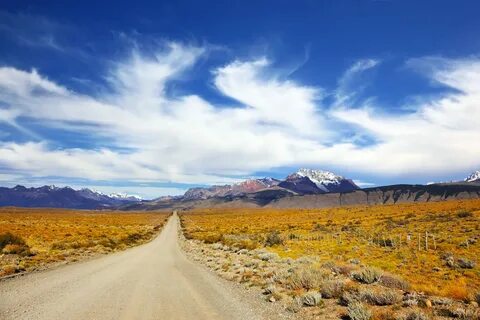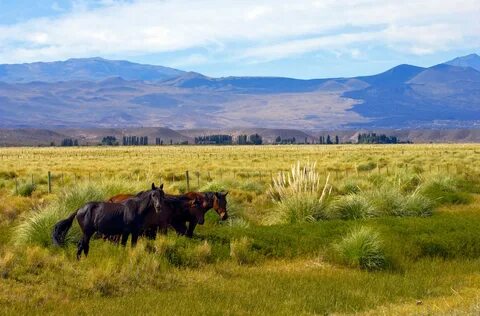La Pampa Detailed Information About the State










Information About La Pampa
La Pampa is a province of Argentina and its center is the city of Santa Rosa. La Pampa is located in the middle of the country and borders the province of Buenos Aires. The state has a predominantly agriculture-based economy, with agriculture, animal husbandry and food processing sectors being important sources of income. The geographical structure of La Pampa consists mostly of plains. There are pampas in the east of the state and mountainous regions in the west. The pampas are characterized by extensive grasslands and fertile soil and are therefore suitable for agriculture. Products such as wheat, corn, sunflower and soy are generally grown in these regions. La Pampa also has a large livestock industry. Cattle breeding is especially important and it is a center for meat production and export. Sheep farming is also common in the state. Santa Rosa, the capital of La Pampa, is the state's largest city and economic center. The city has many tourist attractions and cultural events. Additionally, other important cities in the province include General Pico, Eduardo Castex, and Santa Isabel. La Pampa is also famous for its natural beauty. Places like Bañados del Atuel, Lihué Calel National Park, and La Reforma River are popular spots for visitors to hike, bird watch, and enjoy natural beauty. La Pampa is also rich in cultural events and festivals. Events such as the National Festival of Dance, Santa Rosa Wine Festival, and General Pico National Festival are held to celebrate local culture and provide fun experiences for visitors. As a result, La Pampa is a province of Argentina with an economy based on agriculture. Agriculture, livestock and food processing sectors are important, and the natural beauty and cultural events of the province also make it attractive for tourists.Information about Location and Geography
La Pampa is located in the central region of Argentina. It is a province that receives . Its capital is Santa Rosa. La Pampa is bordered by Buenos Aires to the east, Mendoza to the west, San Luis to the north, and Río Negro to the south. The surface area of the state is 143,440 square kilometers. La Pampa is a region with generally flat terrain. It is covered with large meadows and grasslands called pampas. The lands of the state are fertile and suitable for agriculture. Therefore, agriculture forms the basis of the economy here. Crops such as wheat, corn, barley, sunflower and soybeans are grown. In addition, animal husbandry is also an important source of income. Cattle and sheep breeding is common. La Pampa's climate, g It generally has a temperate and steppe climate. Summers are hot and dry, and winters are mild and rainy. The most important rivers in the state are the Colorado and Salado Rivers. La Pampa's tourist attractions include beautiful natural landscapes, national parks, thermal springs and historical sites. One of the state's most popular tourist attractions is Lihue Calel National Park. This national park is famous for its mountain ranges, forests and wildlife. You can also discover historical and cultural heritage in cities such as La Adela, General Acha, Santa Isabel and Winifreda. Although La Pampa's economy is based on agriculture and animal husbandry, the tourism sector has also begun to develop in recent years. The state offers natural beauty and many opportunities for outdoor recreation.Historical Information
La Pampa is a province of Argentina and is located in the central part of the country. Its capital is Santa Rosa. La Pampa province has a region consisting largely of pampas. Pampas are large steppe areas consisting of plains and fertile soil. Therefore, agriculture forms the basis of La Pampa's economy. There are fertile agricultural lands where products such as corn, wheat, sunflower, soybeans and sugar cane are grown. La Pampa is also important in terms of animal husbandry. A large amount of cattle is raised and meat production contributes to the state's economy. As for the history of La Pampa, the area originally belonged to the Mapuche, Puelche and Ranquel tribe, indigenous peoples. However, with the arrival of European immigrants in the 19th century, the region was colonized. Especially Italians, Spanish and Germans settled in La Pampa and developed their agricultural and animal husbandry activities. La Pampa became an independent province of Argentina in 1952. Today, the state's population is approximately 350,000, and while agriculture and livestock sectors form the basis of the economy, tourism is also an important source of income. The state attracts attention with its natural beauties, national parks and activities such as hunting tourism.Tourist Attractions
La Pampa is a province located in central Argentina. This region is famous for its vast moors, idyllic beauty and natural charm. There are many tourist attractions in La Pampa. Here are some tourist attractions you can visit in La Pampa:1. Lihué Calel National Park: This national park is located in the southwest of La Pampa province. Here, there are tuff volcanoes, mountains, lakes, caves and rich vegetation. Parks, nature walks, mountaineering, cycling and bird watching It is a popular place for outdoor activities such as sports activities.
2. Santa Rosa: The capital of La Pampa, Santa Rosa is an attractive destination with historical and cultural sites in the city. Major tourist attractions in the city include Plaza San Martín, Santa Rosa Cathedral and the Museum of Fine Arts. You can also try local food at local restaurants in the city and shop for local handicrafts.
3. General Pico: One of the largest cities in La Pampa, General Pico offers visitors a variety of tourist and entertainment opportunities. Popular attractions in the city include Plaza San Martín, El Molino Museum, and Fine Arts Center. You can also experience traditional gaucho culture at farms in the city.
4. Ataliva Roca: Located in the north of La Pampa province, Ataliva Roca is famous for its natural beauties and historical sites. Here you can visit Parque Luro, a natural reserve located on the banks of the Pontevedra River. You can also explore places like historical houses and museums in the city.
5. La Adela: La Adela is a small town located in the southwest of La Pampa province. Here you can visit Isla del Jabalí, a natural reserve located on the banks of the Río Colorado River. This is a popular place for bird watching, fishing and hiking. La Pampa is an attractive destination for visitors with its natural beauty, idyllic landscapes and cultural riches. These attractions are just a few examples of the variety of experiences the state has to offer.
Food Culture
La Pampa is a province located in the central region of Argentina. This region has a food culture influenced by traditional Argentinian cuisine, which generally focuses on meat products. Here is some information about the food of the city of La Pampa:1. Asado: One of Argentina's most famous dishes, asado is a barbecue in which meat is cooked over an open fire. Asado, which is also very popular in La Pampa, is usually made with beef or lamb and is usually served with chimichurri sauce on the side.
2. Empanadas: As in other parts of Argentina, empanadas are quite common in La Pampa. These are a delicious snack made by putting various ingredients (meat, cheese, vegetables, etc.) into dough and baked or fried.
3. Locro: This is a casserole dish popular in La Pampa and other Argentinian regions. Locro, made with a combination of red meat, corn, beans and other vegetables, is a preferred dish on cold winter days.
4. Provoleta: Argentina's famous pe It is a dish in which provolone is grilled and served. Provoleta is often served on the side during asado and eaten with bread to enjoy the melting cheese.
5. Dulce de Leche: Dulce de leche, one of the indispensable desserts of Argentine cuisine, is also frequently consumed in La Pampa. This caramel sauce is made by slowly cooking milk and sugar and is usually consumed by spreading it on bread, waffles or pancakes. This is general information about the food of the city of La Pampa. Unlike other regions of Argentina, La Pampa has more meat-based dishes. You can find the opportunity to taste these dishes in local restaurants.
Entertainment and Nightlife
La Pampa is a province of Argentina and is generally known for its natural beauty. Therefore, entertainment and nightlife in the city may be quieter than in other major cities. However, some entertainment options are available. The city of Santa Rosa, located in La Pampa, is the state's capital and largest city. There are various restaurants, bars and nightclubs here. The city hosts live musical performances, dance shows and other entertainment events. Additionally, some bars and nightclubs in the city offer live DJ performances. Enjoying the natural beauty of La Pampa is also a popular entertainment option. You can walk, have a picnic or engage in nature sports in the parks, lakes and natural reserves around the state. There is also the opportunity to camp in these areas. La Pampa also offers many opportunities to explore traditional Argentine culture and history. Museums and historical sites located in different parts of the state can be visited. In these places, you can encounter local arts and crafts and participate in local festivals. As a result, entertainment and nightlife in La Pampa can be quieter than in other major cities. However, you can have a pleasant time exploring the natural beauties, local culture and historical places.Economic Information
La Pampa is a province located in the central region of Argentina. Agriculture and animal husbandry form the basis of La Pampa's economy. The state is known for its farmland, cattle ranches and dairy industry. La Pampa's agricultural sector is characterized by the production of agricultural products such as wheat, corn, sunflowers, soybeans and cotton. Fertile soils in the region provide a suitable environment for agricultural activities. La Pampa is one of Argentina's largest wheat producers. Livestock farming is also a big part of La Pampa's economy. plays a role. The state is famous for its large cattle ranches and meat products industry. Cattle breeding has developed thanks to the large meadows and grazing areas in the region. La Pampa is one of Argentina's most important cattle-raising regions. La Pampa is also known for its dairy industry. Dairy processing plants are used to produce cheese, yoghurt and other dairy products. The state also has meat processing plants and meat exports. Tourism is another sector that contributes to La Pampa's economy. The state's natural beauties, outdoor activities and traditional culture attract the attention of tourists. Nature activities such as hunting, fishing and bird watching are especially popular. La Pampa's economic growth is based on the agricultural and livestock sectors, as well as other sectors. Medium-sized industrial enterprises, mining, energy production and the service sector also contribute to the state's economy. As a result, La Pampa's economy is based on sectors such as agriculture, animal husbandry, dairy industry and tourism. These sectors contribute significantly to the economic growth of the state.
Read: 52